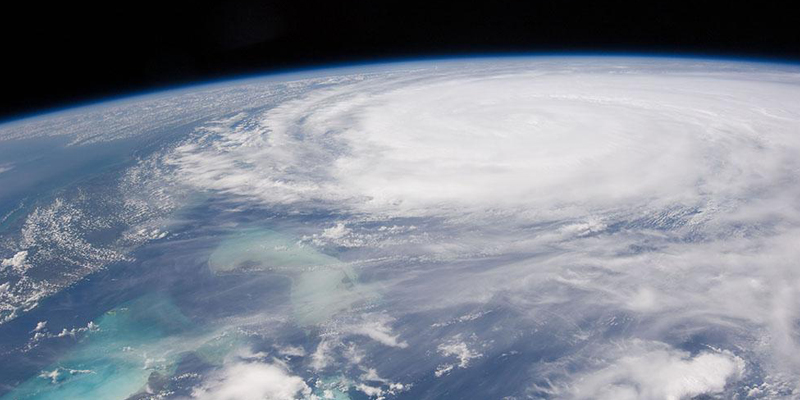


Hurricane season forecast increased |
The most notorious portion of the hurricane season is here |
SHARE    |
 |
| The Atlantic hurricane season officially begins June 1 and runs through Nov. 30, but the most notorious Atlantic hurricanes typically occur during the season's peak from August through October.
Ninety-three percent of major hurricanes (category 3 or stronger on the Saffir-Simpson Hurricane Wind Scale) and those responsible for the most destruction in any hurricane season, occur during these months. All 10 of the costliest hurricanes on record in the U.S. have occurred from August through October, including Matthew (October 2016), Sandy (October 2012), Irene (August 2011), Andrew (August 1992), Ike (September 2008) and Katrina (August 2005). In its mid-August outlook update, the National Oceanic and Atmospheric Administration (NOAA) forecasters report there is a high chance — 60 percent — of an above-average hurricane season, with 14 to 19 named storms, five to nine hurricanes and two to five major hurricanes expected throughout the season. The NOAA team expects near to slightly above-average hurricane activity through November. It increased its forecast for major hurricanes from its May outlook, expecting two to five category 3 or stronger hurricanes. The updated forecast is above the Atlantic Basin's 30-year historical average (1981–2010) of 12 named storms, six hurricanes and three major hurricanes. Colorado State University (CSU) also increased its numbers slightly in its latest forecast. According to the CSU forecast, a total of 16 named storms and eight hurricanes are expected in the Atlantic Basin. Three of the eight hurricanes are forecast to be category 3 or stronger. The Weather Company, an IBM Business, updated its seasonal forecast in July as well. It expects a total of 15 named storms, eight hurricanes and three major hurricanes this season. This is an increase from its earlier forecasts, mainly due to the same factors stated in the CSU outlook. What is it about these three months that make them so active? Atmospheric conditions are more favorable over a much larger expanse of the Atlantic Basin in the peak months of August through October than early or late in the season. Warm water temperatures in the Atlantic Ocean along with the dwindling chance of El Nino's development later this summer contribute to why the forecast has steadily nudged upward. There have already been seven named storms this year: Arlene, Bret, Cindy, Don, Emily, Franklin and Gert. While many of 2017's early-season storms have been weak or short-lived, this year's Atlantic hurricane season has matched the pace of some of the most active seasons on record when it comes to the number of named storms that have formed by early-to-mid August. Only three other hurricane seasons — 1936, 1995 and 2005 — have as many named storms before Aug. 13. A hurricane season can deliver many storms but have little impact, or deliver few storms with one or more causing major impacts to the U.S. coast. The bottom line: it's impossible to know for certain if a U.S. hurricane strike, or multiple strikes, will occur this season. The U.S. averages one to two hurricane landfalls each season, according to NOAA's Hurricane Research Division statistics. Keep in mind, however, that even a weak tropical storm hitting the U.S. can cause major impacts, particularly if it moves slowly and triggers flooding rainfall. We are in the most active portion of the hurricane season and residents of the coastal U.S. should prepare for a hurricane strike or flooding, no matter the forecast. The International Code Council offers education on preparedness through its Hurricane Safety page, filled with disaster safety and mitigation information for code officials and the public. Safety starts with smart building design and construction and buildings built to updated, modern codes are best able to withstand the impacts of severe wind and rain. The materials used in construction, their method of installation, and additional protections such as hurricane shutters and safer glass can be the difference between life and death. |